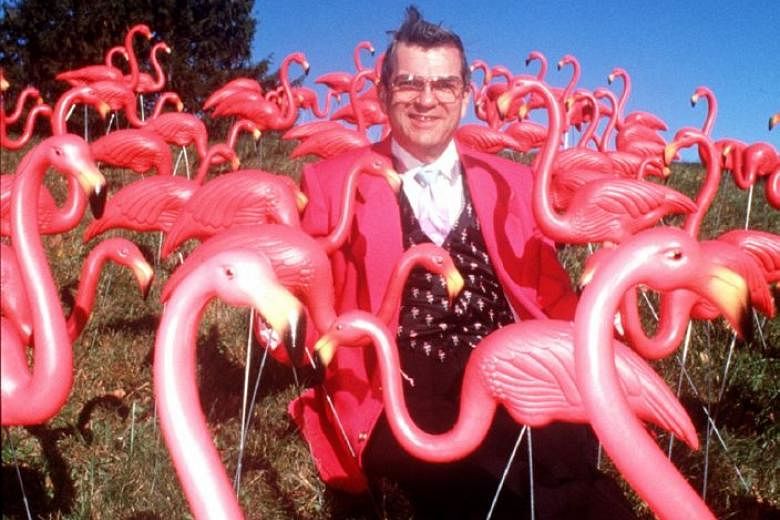LONDON • Fashion is fickle. So what is in the pink of health now?
Look no further than the flamingo. Once a tacky lawn ornament, it has been resurrected as the design element of the moment.
In just over two years, flamingos have soared from the catwalks of Milan to the wardrobes and walls of urban hipsters, to the aisles of Nordstrom, Ikea, Crate & Barrel, Target and Britain's John Lewis department stores.
Flamingos now adorn everything from US$1,495 (S$2,030) Givenchy dresses to US$40 shower curtains.
"Flamingos are the kale of style right now," said Ms Vicki Psarias, founder of British lifestyle blog Honest Mum, referring to the vegetable touted for its health perks.
The flamingo's journey from kitsch to cool illustrates how consumer trends emerge.
Flamingos nestle in the happy middle of a Venn diagram of three hot trends: They are pink, tropical and happen to be birds.
Once there, they quickly grew, with help from a steady diet of celebrity Instagram posts, Pinterest pages and style blogs.
"The ability of social networks to launch, broadcast and instantly reinforce the credibility of a trend has accelerated the old process of trend development by an almost incalculable factor," said Mr Ryan Mathews, a consultant and futurist.
"The path is the same, but the ride is a whole lot faster and bumpier."
The flamingo's ride began way back in 1957, when a young graphic artist with the fitting name of Donald Featherstone created a plastic pink flamingo for Union Products, which Sears offered in its catalogue for US$2.76 a pair.
Suburbanites snatched them up as lawn ornaments and they soon became "widely reviled as the dregs of bad taste", as a New York Times story put it, when Union Products closed in 2006.
The notoriety caught the attention of avant-garde director John Waters, whose 1972 breakout film Pink Flamingos boasted the tag line "an exercise in poor taste".
Flamingos were briefly a mascot of gay culture, but largely petered out, with few mourning when Union Products closed its plastics factory.
Then, in June 2014, a rebirth - thanks to American fashion designer Marc Jacobs, who put flamingos all over a spring 2015 collection.
Other labels, such as Bottega Veneta and Gucci, followed.
When Prada unveiled a flamingothemed fragrance in 2015, a spark was ignited.
Celebrities applied rocket fuel.
At Taylor Swift's 2015 Fourth of July party, the pop star and her pals, such as model Gigi Hadid, frolicked on inflatable flamingos.
Retailers, desperate for a sure thing amid lacklustre sales, jumped on the trend that same year.
Target decided to feature flamingos in its new Pillowfort brand sheets, towels and other accessories for children's bedrooms.
The items did so well that the retailer quickly loaded up with flamingo napkins, string-up lights and water carafes.
Target now offers more than 100 flamingo products. "We didn't know how big it could be," said Ms Julie Guggemos, its senior vice-president for product design and development. "Then, as the trend accelerated, we wanted to react faster."
Over in Britain, John Lewis stocked some flamingo pool inflatables in April last year and was overwhelmed, selling out in eight weeks.
Inspired, it went full flamingo this year: gift wrap, beach towels, lights, wallpaper, novelty glasses, notebooks, napkins, aprons and ties.
And it is not just cheap trinkets.
Nordstrom offers flamingo silk scarves for US$170, while Kate Spade does a large tote bag for US$379.
Crate & Barrel's funky CB2 offshoot features flamingos in its new collaboration with British designer Matthew Williamson.
And good luck finding that Givenchy flamingo dress - it is sold out at Nordstrom.
But as Mr Mathews notes: "Trends can be dismantled at the same speed they are created."
Target's Ms Guggemos said the flamingo has peaked. She senses it is already being replaced by the humble cactus, now trending on the Web.
But do not expect the flamingo to be grounded completely just yet.
WASHINGTON POST

